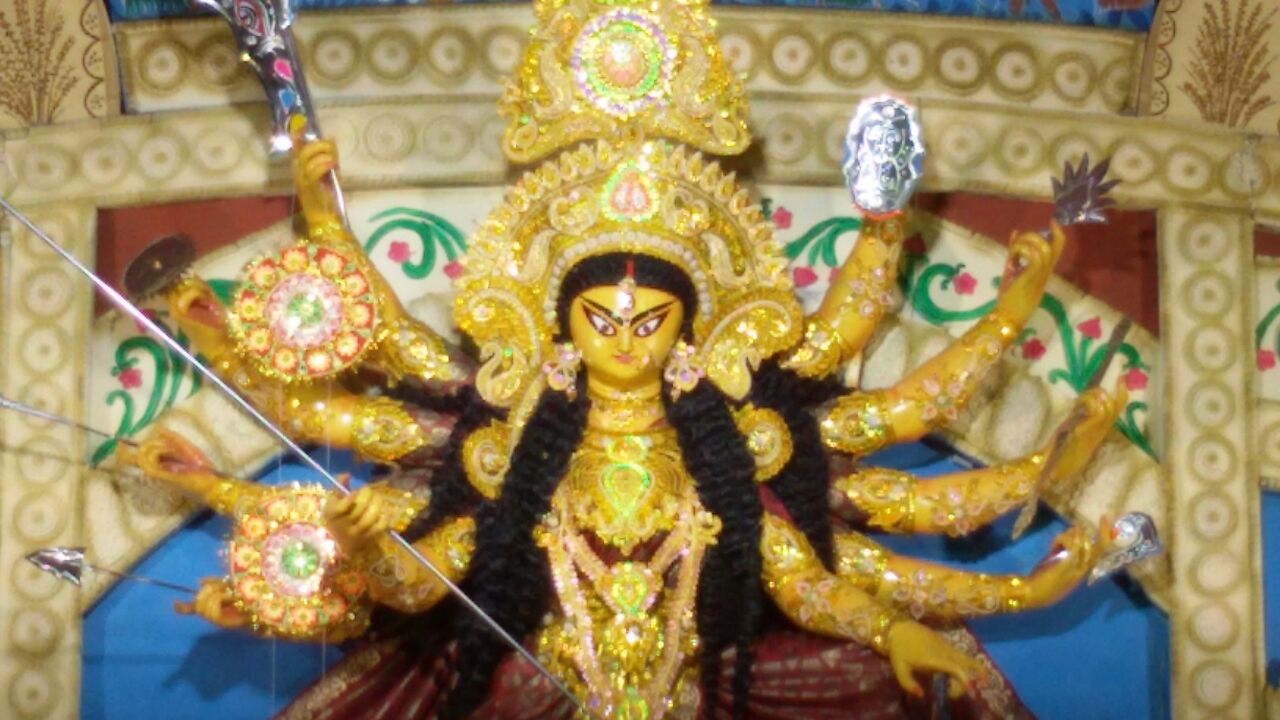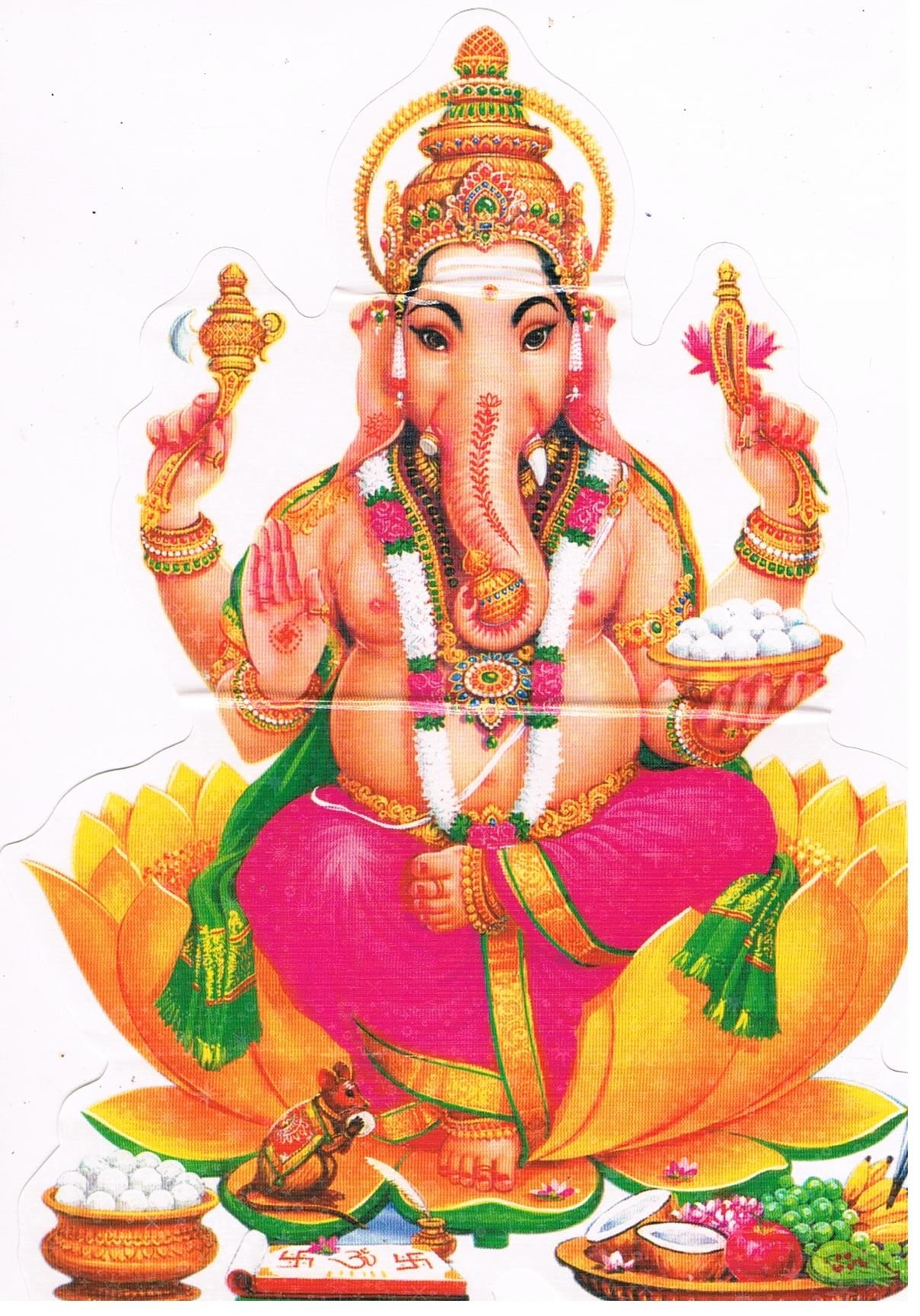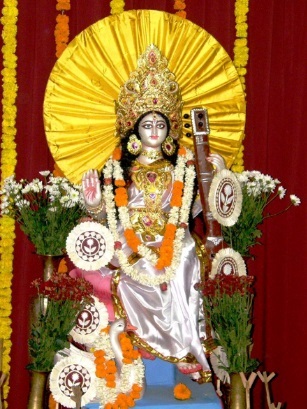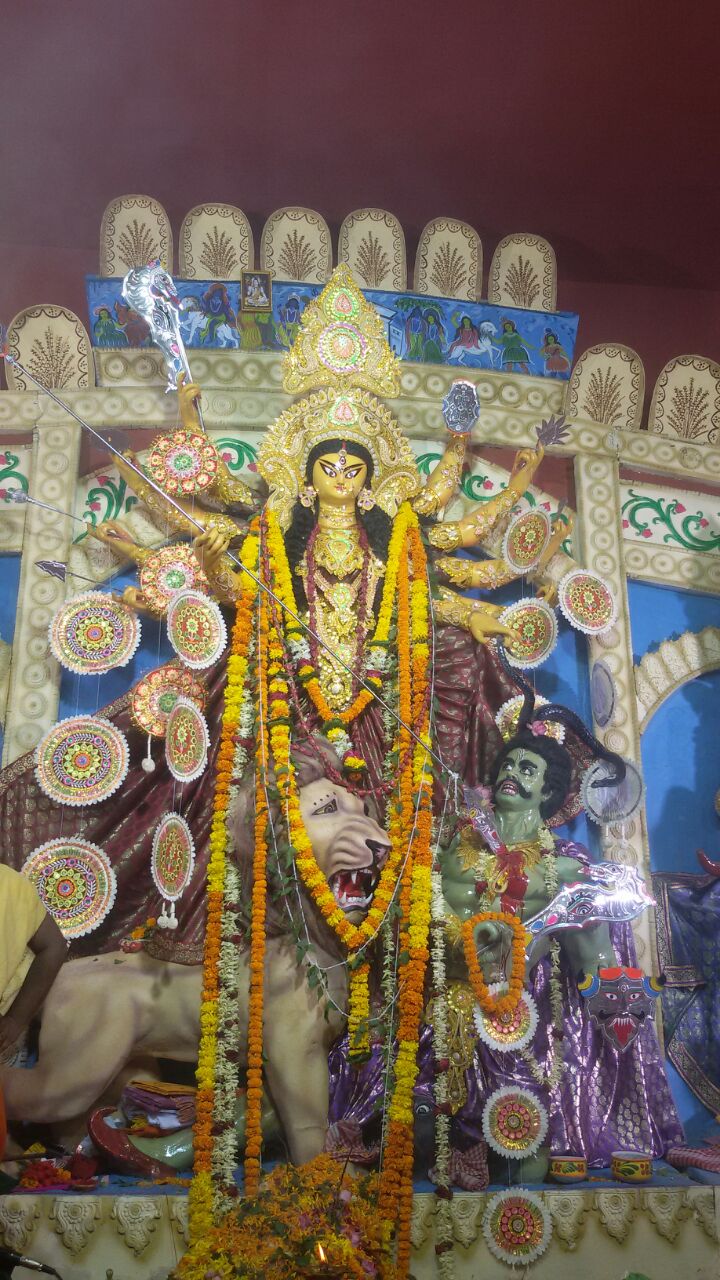The Hindu faith, the cradle of which is India, is a religion which dotes upon the birds and animals. In fact, the religion has bestowed the fur, feathers and fins species the status of divinity by linking their multifarious gods and goddesses to various animals. All the numerous Hindu gods and goddesses are considered the manifestations of one supreme creator, the Almighty God. The gods and goddesses in Hindu mythology travel in supersonic speed on animals and birds. Different gods have different vahanas (animal vehicles). The literal meaning of the word ‘vahana’ is ‘that which carries, that which pulls’. Mesopotamian gods and goddesses were all associated with vahanas. According to some historians, the concept reached Indian shores in the second millennium BC via the trade route between the two ancient civilizations.
Surya – Horses
The sun god, Surya, mounts on a golden chariot, pulled by seven white horses. Seven is a sacred number in Hindu mythology. The seven horses are representative of the seven major sins and how the Sun God triumphs over them. They also symbolize the seven chakras (spiritual vortexes in the human body).
Agni – Ram
Agni, or the fire god, rides upon a ram. Sacrifices are offered to Agni and to many other gods through him. Interestingly, the ram is a sacrificial animal, which has been linked to the Hindu fire god, to whom sacrifices are offered.
Brahma- Swan
Brahma, the god of creation, travels all over outer space on a swan, chanting the sacred Hindu scripture the Vedas. The elegant swan is symbolic of intelligence. As per Hindu tradition, it’s a bird which can figuratively sift the pure from the impure, like it sieves milk from water. Sometimes, Brahma is shown riding seven swans.
Durga – Lion
Ishtar, the Mesopotamian goddess of war is seen with a lion. Similarly, Durga, the mother of the universe and the warrior goddess, pierces a spear into the buffalo demon’s heart, while riding a lion. The lion, as we all know, has been nicknamed the King of the Jungle. In Hinduism it’s also considered the supreme of all animals. Also, let’s keep in mind that the goddess rides a tame lion. The lion may also represent gluttony and the craving for sensory pleasures which gives birth to lust. The goddess riding a lion may also symbolize that she has tamed the instincts of greed, lust and gluttony to rise to a spiritual height.
Ganesha–Mouse
Ganesha, the huge elephant headed god, who is worshipped for wealth and prosperity, mounts on a mouse. This rodent was actually a god named Kroncha in his previous life. He had accidentally stepped on the toes of Saint Vamadeva, who was also worshipped as a god. Stepping on a spiritual being, is considered blasphemous in Hinduism. Kroncha desperately begged apology. Vamadeva’s wrath simmered down. Undoing a curse is mythically impossible, but he toned it down by saying that he would become Ganesha’s vehicle.
As per mythologists, the mouse is symbolic of basal desires. Being dark in colour, it is also averse of light or truth. Some feel that the mouse is representative of the egoistic mind, as it can metaphorically gnaw on the virtues of man. Ganesha, by mounting the mouse, thereby symbolically conquers impure desires, spiritual darkness and pride.
Indra–Elephant
Indra, the god of rain and thunderstorms, rides a white elephant called Airavata. This winged elephant was hatched from a cosmic egg. Of the 16 elephants that were born from this egg, Airavata was by far the strongest. This mythical creature sucks water with her trunk and sprinkles it on earth thereby creating rain. He had fathered winged white elephants as well. One day they accidentally interrupted a class conducted by a sage when he was teaching. He put a curse on them which clipped their wings. The white elephants of today are said to be Airavata’s descendents. Airavata besides being Indra’s vahana is believed to, along with his siblings, hold up the eastern hemisphere of the globe.
Kartikeya –-Peacock
Kartikeya, the god of war is seen in pictures as perched on a magnificent peacock. The prevailing myth is that the peacock doesn’t copulate with the peahen. Therefore it is regarded as a chaste bird. As the old wives’ tale goes the peacock is contented with its magnificent plumes but is deeply embarrassed by its unattractive legs. While it joyfully dances under a cloudy sky, when it glances at its legs, it is moved to tears. The peahen sips the tears and conceives. So, the message to all warriors is that they should forgo all sexual desires, if they wish to emerge victorious in war. The scientific truth however is that peacocks do have sexual intercourse.
Lakshmi–Owl
Lakshmi, the goddess of fortune, wealth and prosperity mounts the wise old white owl. Besides wisdom, the bird also symbolizes patience and intelligence. Its white plumes denote spiritual purity. It is also bestowed with the mythical powers of fortune telling. Simultaneously, this owl also serves the practical purposes of a barn owl. In the state of Bengal in India, the annual festival dedicated to the worship of Goddess Lakshmi, is celebrated in late autumn. This is when the farmers have just reaped a rich harvest and have stocked their granaries with food grains. The owl cleanses the granaries of all pests, thereby protecting the grain. The more grain the farmer sells, the wealthier he/ she will become.
Saraswati–Swan
Saraswati, the goddess of knowledge, wisdom, learning, music and arts is seen with a swan. As she is after all Brahma’s consort, it’s not surprising that she has chosen the same bird as the vahana.
Shani–Crow/Raven/Vulture
Hindus pray to Lord Shani to ward off influences of evil forces. Just like mischievous magpies have ill repute in the occidental part of the globe because of their thieving tendencies; in India crows too are linked with stealing. By mounting the crow, Shani is said to suppress pilfering habits in people. He is also the god who metes out punishment to those who have abided by evil ways.
Shashthi–Cat
Goddess Shashthi, the goddess of fertility, is worshipped by the childless who wish to conceive. As the old tale goes, the daughter-in-law of a farmer, consumed great quantities of fish and milk from the kitchen on the sly. When confronted, she falsely put the blame on a black cat. The innocent animal was beaten repeatedly. The feline complained to Shashthi and decided to teach the liar woman a lesson. The cat stole six of her new born baby boys. Her seventh child was a daughter and when the cat tried to take her away, she injured it and followed her to discover that all her children were with Mother Shashthi. The goddess insisted that she apologize to the cat. The woman touched the cat’s paws as a sign of devotion and promised never to put false blame on it. All her kids were returned and her sisters-in-law were blessed with bonny babies.
Shitala—Donkey
Shitala is prayed to with the hope that she’ll ward off chicken pox, measles and sores. She is believed to ride the streets of villages on a donkey with a broom, sweeping paths free of germs.
Shiva–Bull
Shiva, the destroyer, rides a bull named Nandi. The bull being a strong animal symbolizes virility. Nandi is Shiva’s ardent devotee. He is said to have lived with the god in the heavenly snowy abode of Kailash.
Vishnu–Eagle
Vishnu, the Preserver/Protector mounts an eagle-like creature called Garuda. To save his mother, Garuda flew to the heavens and slayed two snakes to fetch a pot of nectar. Since that day, Garuda developed acrimony with snakes and started feeding on them. The eagle, as we all know, preys on snakes too. Garuda is seen as clutching two snakes and with serpents garlanded around him.
Yama–Male Buffalo
Yama, the lord of death, rides a black buffalo. This celestial beast is said to be strong enough to ferry two armoured gods. Yama is also the god of righteousness, his tough water buffalo is said to be symbolic of upholding justice. Yama, perched on the buffalo roams around the world, searching for souls which are about to exit the earthly abode.
Ayyappa–Tiger
The tiger, which is the national animal of India, is the vehicle of god Ayyappa, who happens to be Shiva’s son, conceived of the enchantress Mohini. The baby Ayyappa was forsaken on the river banks and was found by a childless king. Later, the queen had a biological child. She faked an illness which would only be cured by tiger’s milk. She summoned Ayyappa to fetch the milk. The wicked woman secretly hoped that the tiger would kill him. He returned victoriously on a female tiger along with her cubs, carrying a pot full of milk. The royal couple realized that he was god. The queen pleaded for forgiveness.
Countless Vahanas
These were just a handful of tales of Indian gods and goddesses with their beloved animals. Vayu (the wind god) rides on a horse. Varuna (the water god) rides the waves on a crocodile. The river goddess Yamuna drifts on a tortoise. Bhairava, a manifestation of Shiva, has chosen a dog as his vehicle. The list is almost endless.
There are more than 330 million gods and goddesses in Hinduism. The tales of them with their respective vahanas have filled voluminous books, which are stored in various quaint libraries across the country. Some of these manuscripts are still in the ancient Indian language Sanskrit, which are yet to be translated to English and other contemporary Indian languages.
The Future Vahana
There’s yet another god whom Hindus are looking forward to. He is to make his entry into the world along with his vahana in future. Currently, Kaliyug, or “age of vice”, is ongoing as per the Hindu mythological calendar. It’s believed that Kalki, an incarnation of Vishnu, will come galloping on a white horse, to usher in Satya Yuga, “the age of truth and virtues”.
Pallavi Bhattacharya from Mumbai in India is the pet parent to a white rabbit named Potol. She feeds stray dogs and cats. She has written for leading Indian publications on animals/ pets like gingertail.in, Dogs and Pups, Cats and Kittens, the Furs, Feathers and Fins magazine and Buddy Life.










Allah made manifest